This is interview on how to catch a mangrove jack is ALF EPISODE 138. Check out our archives for more information on mangrove jack fishing.
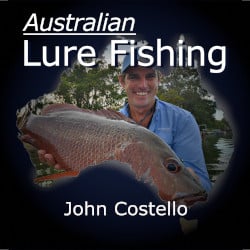

How To Catch A Mangrove Jack: John’s Gold Coast Tactics
- John’s biggest tip for how to catch a mangrove jack on lures is to work on your casting accuracy. Gold Coast mangrove jack are often very structure oriented and consistently casting with pinpoint accuracy is a critical skill.
- Don’t bother putting in a cast if there is no chance of losing a lure to a snag or fish, look for the gnarliest spots, that’s where the fish will be. Mangrove jack fishing is about putting your best lures in danger.
- The Gold Coast has over 400 km of canals with tens of thousands of pontoons. A good strategy for a newcomer to Gold Coast jack fishing is to start by fishing deep diving hard body lures around the numerous man-made rock walls and bridge pylons throughout the canals in the mid-sections of the Coomera, Nerang and Tweed rivers.
- Look for areas with both shadows and structure, jacks love to lurk in the lower light areas. Shadow is easier to find in the early morning and late afternoon and areas such as the shadow lines beneath bridges, retainer walls and pontoons are top mangrove jack haunts.
- The entrances of canals are bait pathways where baitfish are forced to move through, so the shadow lines cast by the first few pontoons, the rock walls and retaining walls around the entrance of canals are prime fishing spots.
- The natural areas further upstream in these systems also hold good numbers of jacks, often in relatively shallow, heavily snagged waters that get a fair bit less angling pressure. Learning to skip cast is helpful for getting lures into these areas.
- Jacks have excellent low light vision and will position themselves where they can see bait being washed towards them. They use the shadows and structure to hide where bait will be brought right into their faces. They don’t tend to move far out of structure to hit a lure.
- A little discolouration of the water helps with mangrove jack fishing. John will often leave the ramp and head into the system looking for areas of colour change where runoff comes into the system.
- Using Google Earth or Queensland Globe can help identify areas where water clarity has changed at a point in time. Areas with visible weedbeds can be assumed to have relatively clear water and may be less productive.
- Areas of water temperature change are critically important spots for jack fishing. Finding increases as little as 1 or 1.5 degrees is a great strategy for those keen to figure out how to catch a mangrove jack, so look for small lakes or offshoots of canals where the water sits a little longer and has more time to warm up.
- Whilst conventional wisdom is often that mangrove jack fishing is best on a run out tide, John finds that a run in tide late in the day floods water onto rocks and mud that have been exposed and are heated up by the sun. This creates localised areas of warmer water that attract jacks and stimulate feeding. Likewise, black plastic pontoon floats can create heat banks that attract jacks with localised warm water.
- During periods of heavier rain when the water becomes very discoloured a large number of mangrove jacks move downstream. However, those that stay in the system tend to be the larger fish. These fish will often be in the very dirty water at the mouth of drains (or even within the drain), much as a runoff barramundi would do.
- Time of day is a hotly debated topic among fishos keen to nail down how to catch a mangrove jack on lures. Gold Coast jack fishing can be good right through the day, but the low light periods around dawn, dusk and through the night are definitely peak times. On cloudy days those periods of low light get extended, creating more opportunities. When fishing through the day, focus on pontoons, as these provide shade at all times of day.
- On days of intermittent cloud cover mangrove jacks will often move out of cover onto the shallow rock bars when cloud moves over, but will retreat back tight to structure along shadow lines when the sun comes out.
- When there is a little more discolouration to the water the low light bite windows tend to be extended. John finds fish are active for longer periods in the top end of these systems where the water clarity is a little less than further downstream.
- The bigger tide periods around a full moon or new moon often fish better than smaller tide periods. Tide and wind pushing bait into a pontoon makes fishing challenging but the bite can be super aggressive.
- Many ALF listeners who are just learning how to catch a mangrove jack on lures are land-based. If that’s you, then fishing bridge pylons in the late afternoon is the best bet. Get your lures across the front of the pylons, between and around them and be prepared to be very quick to lock the drag and wrangle fish from cover. John suggests hitting 6-7 bridges for 20 minutes each on a stormy afternoon, but beef up the gear and expect heavy losses!
- Don’t bother working the lure back to the rod tip, cast very tight to structure, then work the lure until it’s a metre or so from the structure, do a quick rod tip lift and let the lure sit for a few seconds. Fish will often hit it thinking it’s about to get away. Then just crank back at full speed and fire another cast tight to structure.
- This is not a fish you can let run. On 20lb line, John has the drag of his Shimano Curado almost locked up. Make sure your hooks and rings are heavy duty as this fish is very unforgiving.
John’s Tackle Recommendations For Jacks
- For accuracy of casting John prefers a relatively short baitcast rod with a low profile reel such as a Shimano Curado. Keeping the line as light as possible also helps with casting, but understand that you’ll lose a lot of lures if you go too light.
- A 5’6”, 8-10kg baitcast rod coupled with a low profile Curado reel is great for this style of fishing as it gives excellent casting accuracy, allows the angler to work the lures in the manner that works best for mangrove jacks and provides enough backbone to have a chance against a brutal fish.
- A lighter 3-5kg Bassraider rod, again coupled with a low profile reel such as the Curado, is perfect for fishing further upstream or around pontoons when skip casting your lure under structure becomes important. (Editors Note: I use the Jabbers Urban Beats Deft Flicker for this – Doc)
- A quality 20lb braid and 20lb fluorocarbon leader completes the baitcast outfits and gives a fighting chance on the jacks.
- John also carries a reasonably priced spin outfit comprised of a 2500 size Shimano Stradic on a 7’6” Snapper Spin rod for fishing around pontoons. He loads this reel with straight through 20 lb casting fluorocarbon, such as Berkley Vanish. This outfit is perfect when targeting big jacks that run back under pontoons where the abrasion resistance of the fluorocarbon is a big advantage over braid that parts at the mere sight of an oyster or barnacle.
John’s Best Mangrove Jack Lures
- Figuring out how to catch a mangrove jack on lures can get complex. They can be aggressive and eat just about anything one day, then fussy and hard to tempt the next. John’s favourite lure options follow.
- Tiemco Sumari 90F Deep is a little hard to find, but when the front hook is replaced with a BKK Raptor Z and the rear hook is replaced with an Owner 2x strong the lure suspends perfectly and has the perfect cadence that switches jacks on. This lure should be cast tight to structure and worked super aggressively for a couple of rips and then allowed to sit stationary. The longer it’s stationary, the better. Hang on.
- The 4” Zman DieZel MinnowZ in pearl or red shad colours on a ⅜ oz, 3/0 TT lures jig head is the perfect weapon to run across the edges of pontoons at medium speed and has accounted for a lot of large mangrove jacks. Use the Snakelockz weedless jig head system also works well with this lure if you’re fishing heavier cover. John stays well back from pontoons and makes stealthy casts to run the lure along the pontoon within the shadow. Don’t put any pauses or jigging into the retrieve (this will result in a bycatch of trevally, cod etc) just keep the lure moving at constant speed an in close proximity to the pontoon.
- Boy Howdy by Cotton Cordell is a dual prop fizzer that resembles a garfish. John works these aggressively for 30cm at a time to get the props really fizzing, then stalls the lure to let it sit on the surface for jack to smash. Replace the stock hooks with Owner 2x strong models.
- The Flash Arrow J Shad FW 4” is perfect for skip casting around mangrove roots, pontoons and other difficult to access structure. This enables the angler to target fish that most anglers wouldn’t be able to tap into, with large, aggressive jacks are often the result.

John Costello
Kayak Fishing YouTuber and Blogger
John has been fishing the Gold Coast for 25 years and is a well known lure fishing YouTuber and blogger, posting numerous reviews of lures he has tested on his local waters. A keen kayak fisher, he’s also produced some instructional DVD’s for anglers wanting to get into kayak fishing and for those learning how to catch a mangrove jack (or a flathead) on the Gold Coast. John’s not sponsored by tackle companies, preferring to keep his tackle reviews impartial.
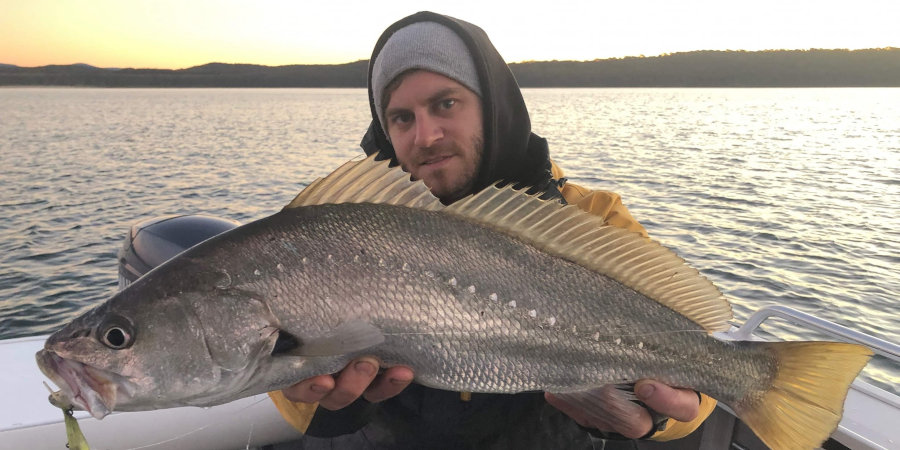
Secrets To Lure Fishing In Lake Macquarie During Winter
EPISODE 630 Lake Macquarie lure fishing gun Dan Guilfoyle is back with advice on how to enjoy hot winter fishing in Lake Macquarie. Dan Guilfoyle Lake Macquarie Fishing Identity Dan grew up fishing Lake Macquarie and as a youngster used to walk the banks and wade the...
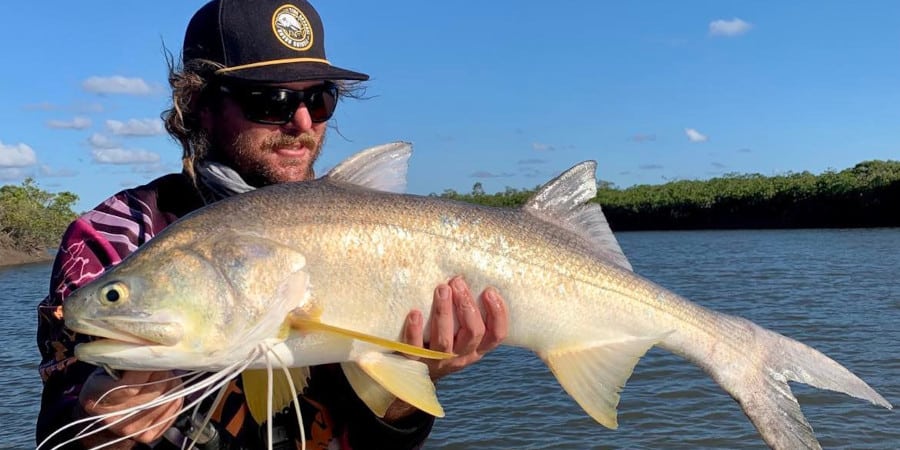
Episode 593: Great Sandy Straits Autumn Fishing With Ryan Holdsworth
The Great Sandy Strait has almost unlimited barramundi, mangrove jack and threadfin habitat….. you just need to know how to fish it. Fortunately, today’s guest Ryan Holdsworth gives his tips freely and will put you on the right course to success!
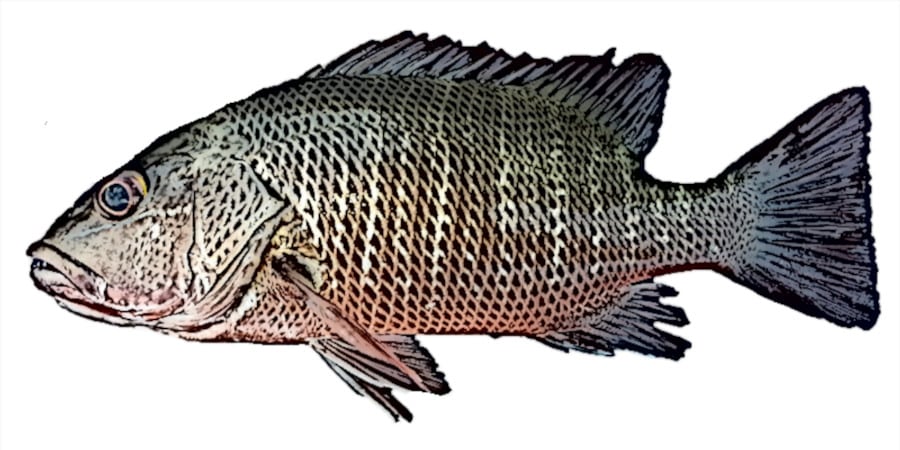
Episode 580: Mangrove Jack Roundup With Greg Vinall
Mangrove jack are a popular North Australian specie, but how much do you know about their habits and behaviours?
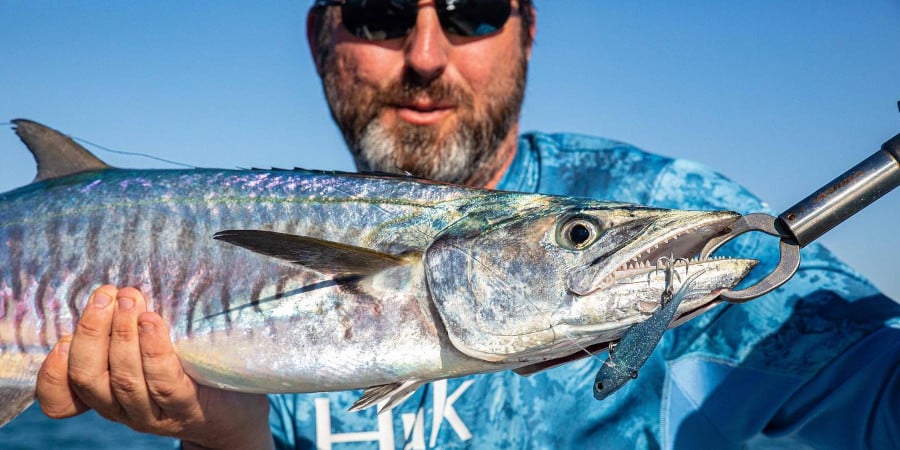
Episode 547: Fishing Around Exmouth In Spring With Steve Riley
Every time I interview Steve Riley about fishing the Exmouth area I get blown away by the opportunities on offer, but I think this interview could be my favourite so far. Steve spills the beans on five land-based fishing spots that are available to visiting anglers during spring. In the course of the conversation we cover everything from bream and whiting to tuna, reef species and pelagics including monster GT from the beach. What a destination!
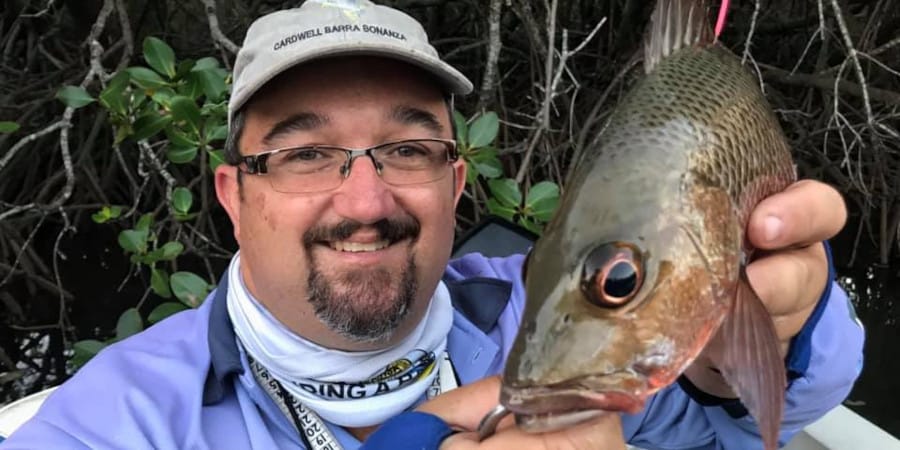
Hinchinbrook Winter Mangrove Jack With Adam Royle
They might be considered a “warm-months” species, but Adam Royle fishes for Hinchinbrook mangrove jack right through the winter months with good success – even on topwater lures! In this episode he does a great job of explaining exactly how he achieves good catches of red dogs when the water is a little on the cooler side.
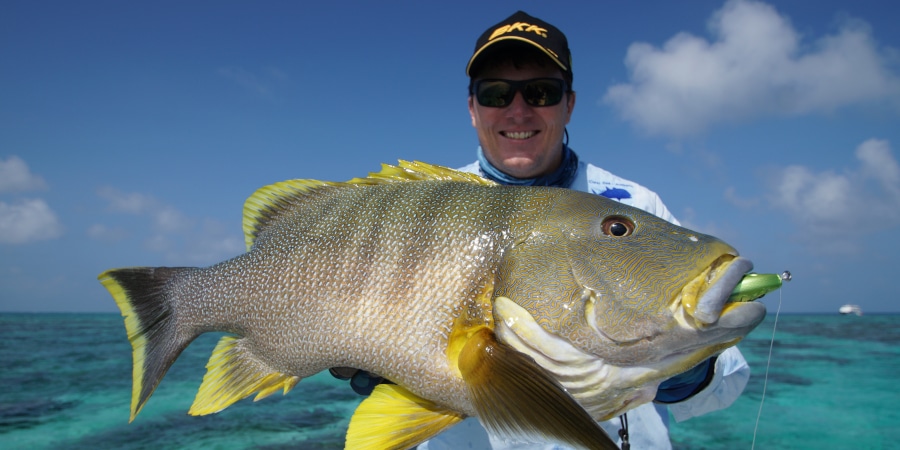
Episode 525: Five Best Queensland Sportfishing Destinations With Damon Olsen
Damon Olsen has spent over 20 years exploring every corner of every reef between Fraser Island and the tip Of Cape York. In today’s episode he walks us through the five destinations he’d really like to go back and fish all over again!
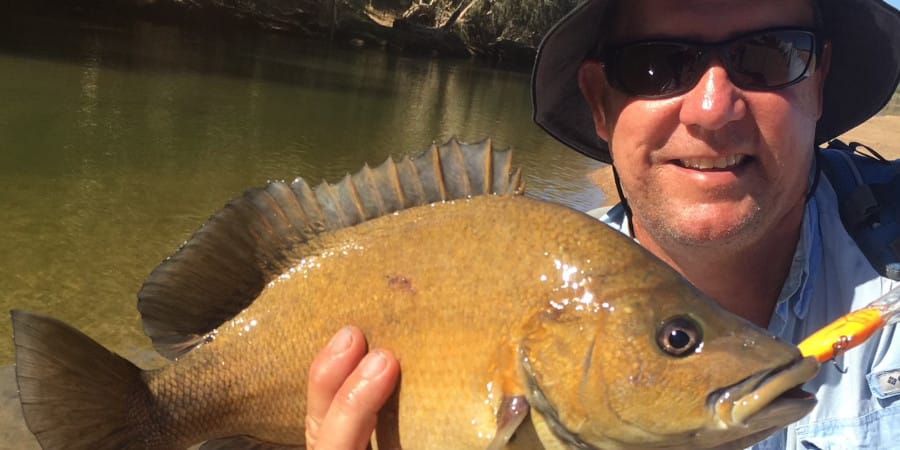
Episode 522: Far North Qld Sooty Grunter With Phil Laycock
Pound for pound, sooty grunter are as tough a freshwater sportfish as you’ll find anywhere. Aggressive lure takers and hard fighters in often skinny water, sooties are accessible to just about anyone fishing Far North Queensland, whethere from boat, kayak or bank.

Episode 511: Five Best Winter Fishing Spots In The Wet Tropics With Kim Anderson
The wet tropics rivers and estuaries are often thought of as wet season options, but long time local guide Kim Anderson dispells that myth!
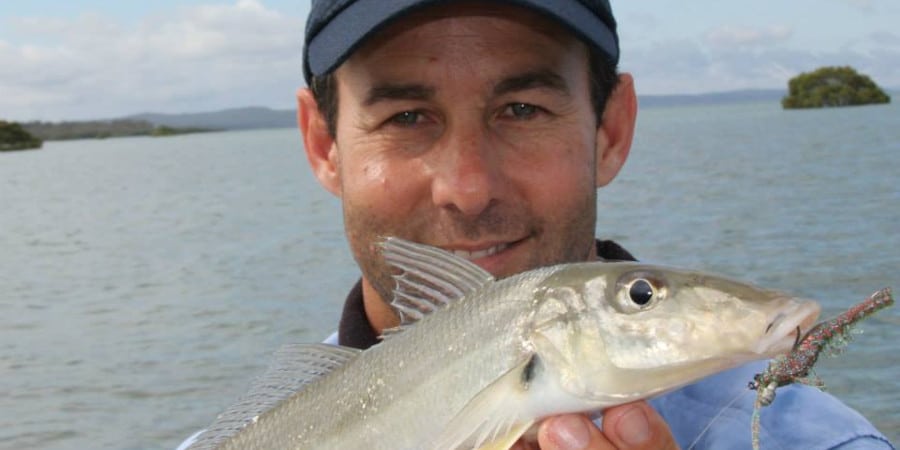
Episode 506: Nigel Webster’s Top 5 Winter Fishing Spots On The Sunshine Coast
Nigel Webster is a long-term Sunshine Coast resident, fishing journalist and TV presenter. In this episode he shares his five favourite places to fish the Sunshine Coast during the winter months, complete with lure list!
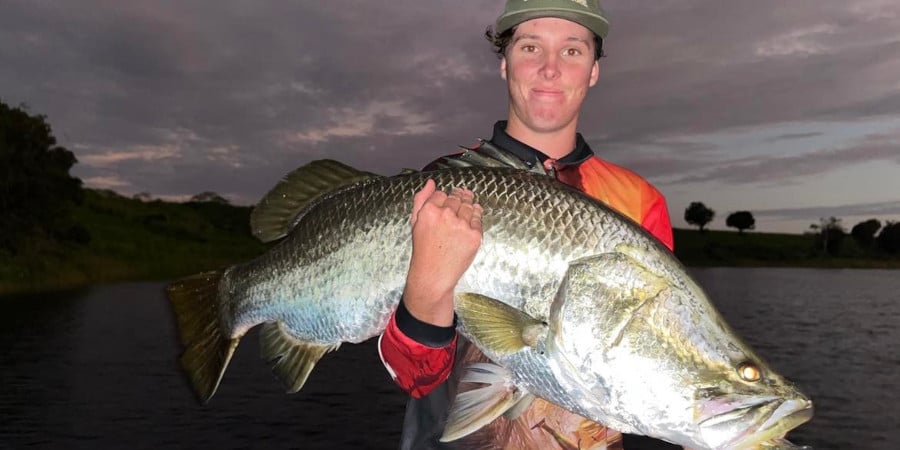
Episode 505: Koombooloomba Dam Sooties And Barra With Riley Ward
Koombooloomba Dam isn’t even on the radar for most northern impoundment fishos….. But it should be! Riley Ward explains how to catch football sized sooty grunter and metery barramundi from this stunning dam system.
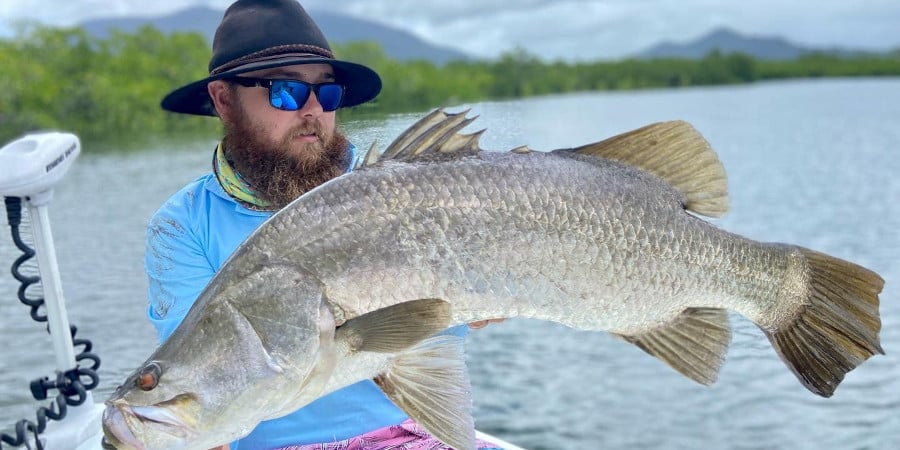
Hotspots: Five Best Winter Fishing Spots Around Hinchinbrook
This conversation with Jimmy Falkenberg was ALF EPISODE 591, but it's only one of hundreds of lure fishing episodes in our library. Fishing The Hinchinbrook Area In Winter The tropical north of Australia doesn't have the four distinct seasons of the southern states....
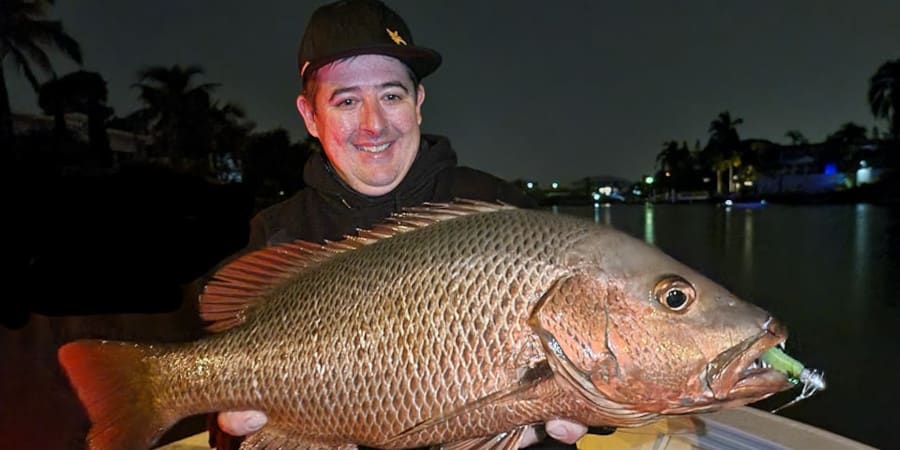
Episode 481: Gold Coast Mangrove Jack With Owen McPaul
The Gold Coast area is famous for stonking, horse jacks, and today’s guest Owen McPaul catches his share of trophies!

Secrets To Lure Fishing In Lake Macquarie During Winter
EPISODE 630 Lake Macquarie lure fishing gun Dan Guilfoyle is back with advice on how to enjoy hot winter fishing in Lake Macquarie. Dan Guilfoyle Lake Macquarie Fishing Identity Dan grew up fishing Lake Macquarie and as a youngster used to walk the banks and wade the...

Episode 593: Great Sandy Straits Autumn Fishing With Ryan Holdsworth
The Great Sandy Strait has almost unlimited barramundi, mangrove jack and threadfin habitat….. you just need to know how to fish it. Fortunately, today’s guest Ryan Holdsworth gives his tips freely and will put you on the right course to success!



0 Comments